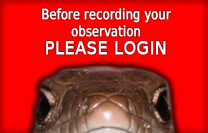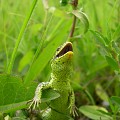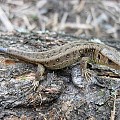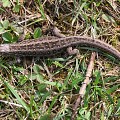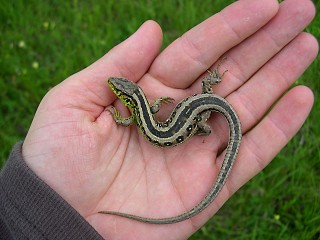
The SAND LIZARD's body is bulky, head short, wide and deep. Total length (body+tail) 20-23 cm. Back pattern similar in males and females: mid-dorsal band of dark blotches flanked on either side by lighter, beige stripe. Flanks of females greyish brown with darkly framed light rings (ocelli). Those of males green or yellowish, becoming brighter in breeding season, with black speckles or ocelli similar to those in females. Some males have rusty or brick-red dorsal band. Belly usually yellow, green or bluish green with black speckles. Young brownish with ocelli on the sides, and yellow or bluish green belly.
Distibution map by our National Herpetological Mapping Program:

